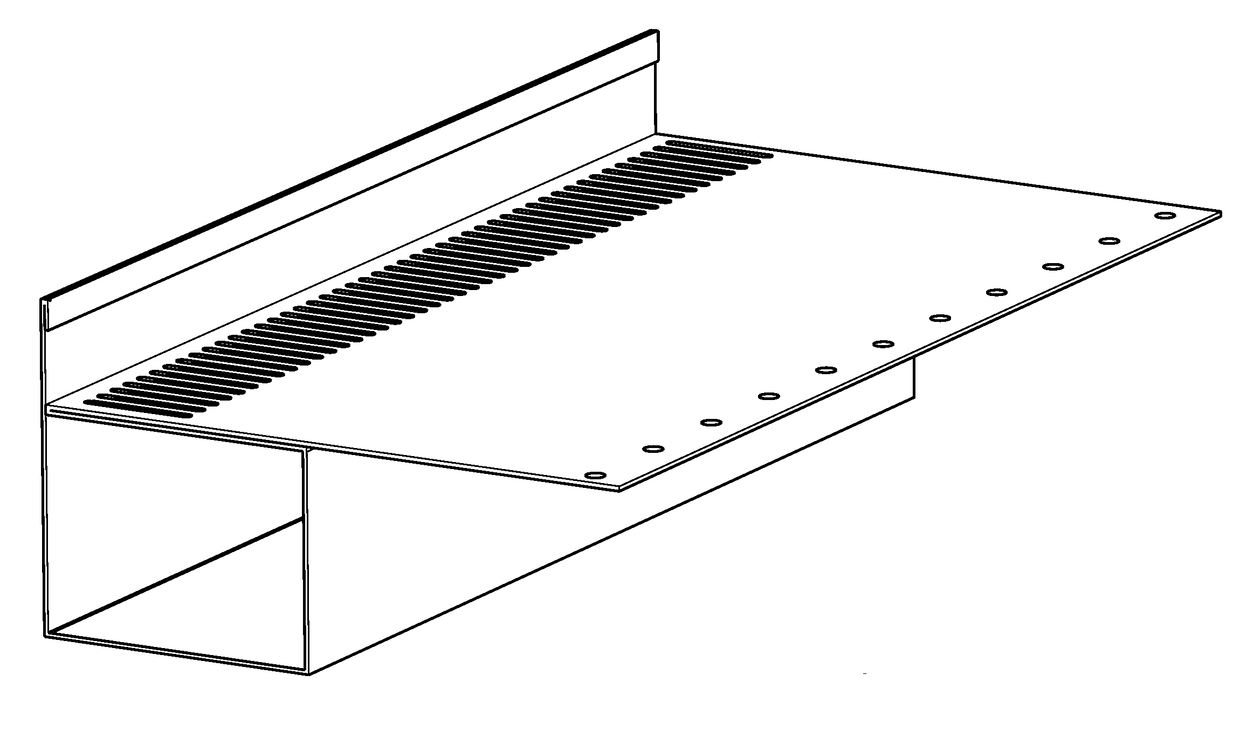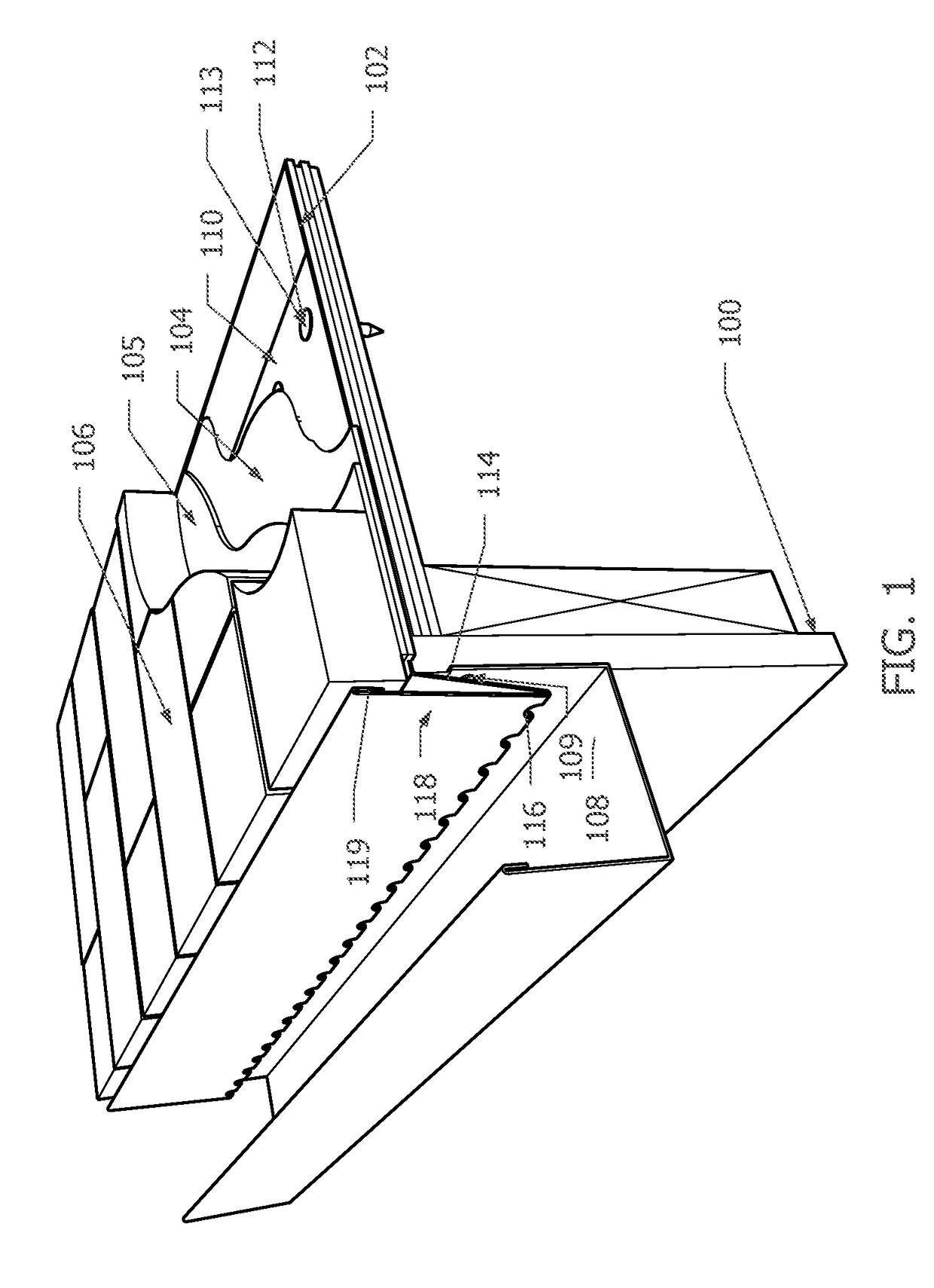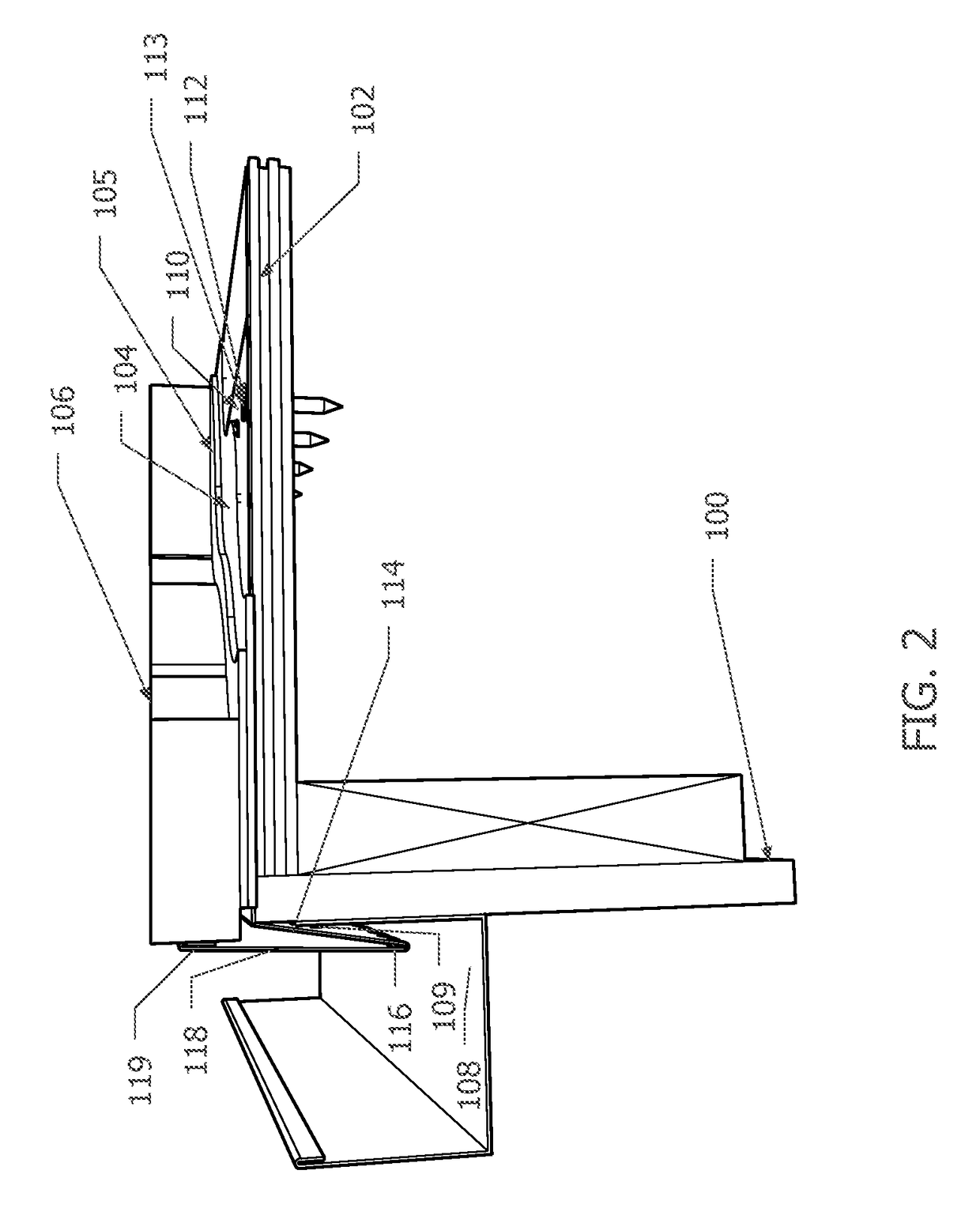Edge Flashing for Roofs with Functional Surface Materials
a functional surface material and roof technology, applied in roof coverings, roofs, constructions, etc., can solve the problems of ponding, not allowing water drainage, and requiring more manufacturing costs, so as to avoid ponding and increase the cost of installation
- Summary
- Abstract
- Description
- Claims
- Application Information
AI Technical Summary
Benefits of technology
Problems solved by technology
Method used
Image
Examples
Embodiment Construction
[0057]Various exemplary embodiments of novel types of flashing are described. In exemplary embodiments of the present invention, the flashing can serve as an edging, providing support for an applied surface material on a roof, which in turn provides protection for a roofing membrane. A horizontal (or pitched parallel to the pitch of the underlying roof) leg of the novel flashing can be installed under such an applied surface material, for example, thus augmenting the solidity and longevity of the installation.
[0058]Exemplary flashing can, for example, be installed under a roofing membrane using mechanical fasteners, construction adhesive, or the like, or, for example, it can be installed over the roofing membrane using an adhesive flashing tape (e.g., a marginal strip that is compatible with a given roofing membrane) that overlaps both the flashing and the roofing membrane.
[0059]In exemplary embodiments of the present invention, an exemplary flashing can provide a two-fold approach ...
PUM
 Login to View More
Login to View More Abstract
Description
Claims
Application Information
 Login to View More
Login to View More - R&D
- Intellectual Property
- Life Sciences
- Materials
- Tech Scout
- Unparalleled Data Quality
- Higher Quality Content
- 60% Fewer Hallucinations
Browse by: Latest US Patents, China's latest patents, Technical Efficacy Thesaurus, Application Domain, Technology Topic, Popular Technical Reports.
© 2025 PatSnap. All rights reserved.Legal|Privacy policy|Modern Slavery Act Transparency Statement|Sitemap|About US| Contact US: help@patsnap.com



